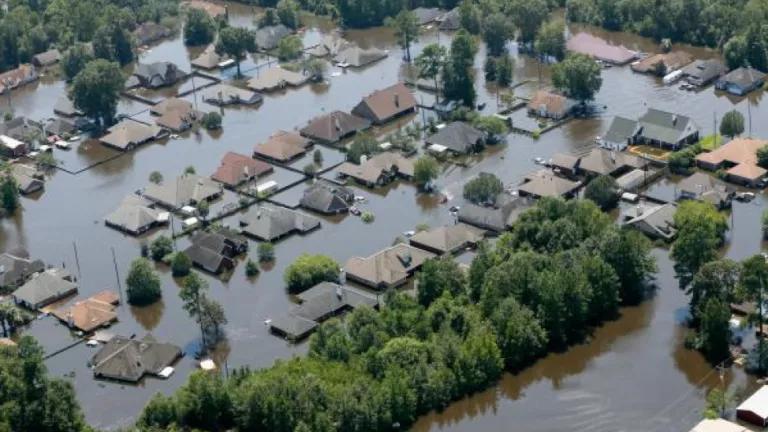Changing the Flood Insurance Program for a Changing Climate

Over the last month, flooding caused widespread devastation throughout the Midwest, breaching levees, drowning farms, and stranding communities. Historic flooding is projected to continue through May, with two-thirds of the contiguous US facing an elevated flood risk. Climate change is exacerbating extreme weather events, making flooding more likely.
The National Flood Insurance Program (NFIP), due to its flood insurance, mapping, and building and land use requirements, is inextricably linked to the nation’s ability to address this growing threat. However, the NFIP, as currently structured, is ill prepared. A new article from the Natural Resources Defense Council and the Sabin Center for Climate Change Law, released in this month’s Environmental Law Reporter, provides key recommendations on how to change the NFIP for a changing climate.
We recommend the following:
- Provide more homeowners the option to move out of harm’s way through a national “discounts for buyouts” program. The program would offer homeowners discounts on their flood insurance premiums now, in exchange for a commitment to accept a future buyout once their home is substantially damaged by flooding.
- Speed up compliance of flood-prone properties with floodplain development requirements that decrease the potential for flood damage by encouraging community adoption of a cumulative and/or lower threshold “substantial damage” or “substantial improvement” standard.
- Increase the transparency and availability of information on flood damages, number and cost of policies, information on repeatedly flooded properties, costs of the program to the nation, and the level of enforcement by participating communities through greater sharing of Federal Emergency Management Agency (FEMA) flood data, provide homeowners a “right-to-know” their properties flood history of NFIP and disaster aid assistance, and require, at the state level, disclosure policies that inform homebuyers about flood-related risks.
- Improve monitoring, tracking, and disclosure of data related to community compliance with the NFIP’s minimum building and land use requirements and provide greater resources to help states and communities implement and enforce the NFIP’s floodplain regulations at the community level.
Congress must reauthorize the NFIP by May 31 to prevent the program from lapsing. However, having reauthorized the program without reform ten times since September 2017, they must do more than simply kick the can down the road to ensure the program is able to handle the growing threat of flooding. The above-mentioned changes are important considerations for reform, but they are not exhaustive. Congress also should continue to move the program towards risk-based rates, provide appropriate, means-tested insurance and mitigation assistance to low-income households, and give FEMA the clear authority and means to update floods maps to reflect sea level rise and other climate change impacts that influence flood risk. As climate change continues to expose more Americans to devastating flooding, Congress needs to make NFIP reform a priority.
